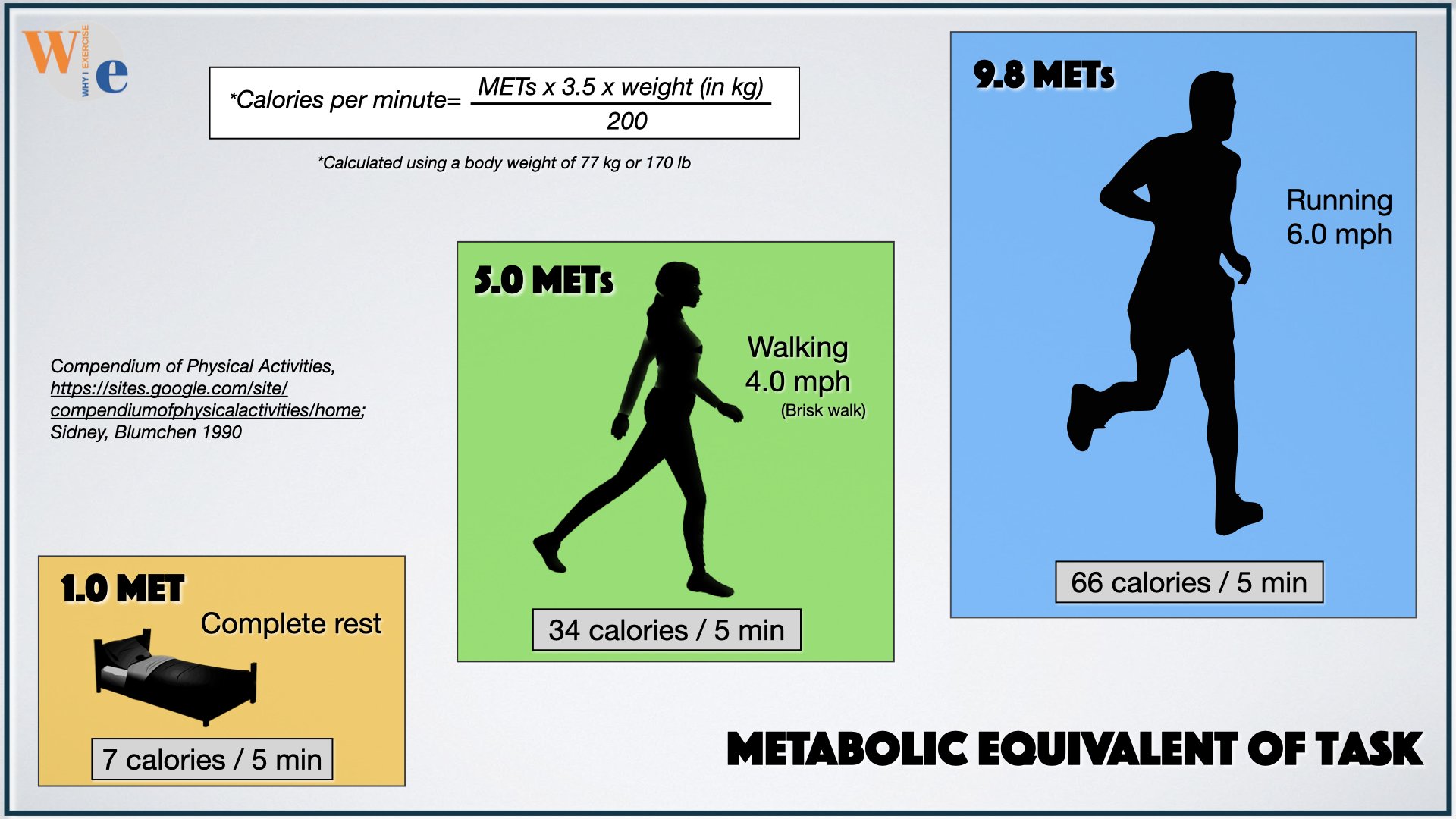
Metabolic Equivalent
Pick the best exercises for longevity and calories burned.
 Walking 4.0 mph burns five times the calories you burn at complete rest. Running 6 mph burns nearly 10x.
Walking 4.0 mph burns five times the calories you burn at complete rest. Running 6 mph burns nearly 10x.Metabolic Equivalent of Task (MET) shows you the amount of energy you burn during exercise, sports, or any physical activity. 1 MET represents the energy we burn at rest in one minute, which is 3.5 ml of oxygen, per kilogram of body weight, per minute.
Any activity that requires more energy than rest will have a MET value greater than one. The energy needed to walk 4.0 mph on a flat surface is 5 METs, and it takes 9.8 METs to run 6.0 mph.
Depending on your current physical ability, you can choose from all kinds of activities to get the exercise you need and meet your fitness goals.
Sports, leisure activities, cardio exercise, daily life activities, senior-friendly activities, and more were all studied scientifically to determine their METs.
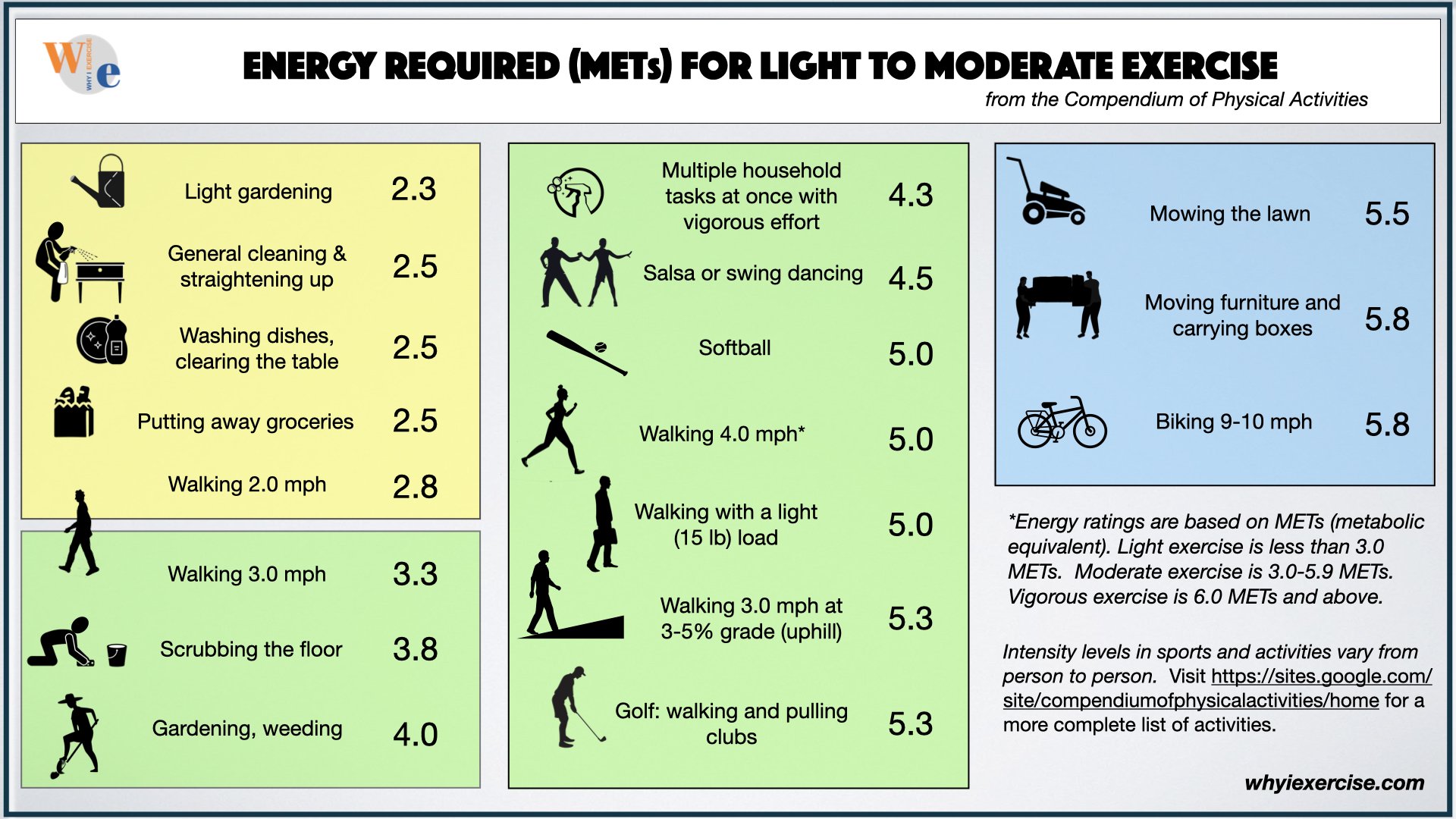 Compare METs (exercise intensity rating) for all kinds of exercise and activities in these charts.
Compare METs (exercise intensity rating) for all kinds of exercise and activities in these charts.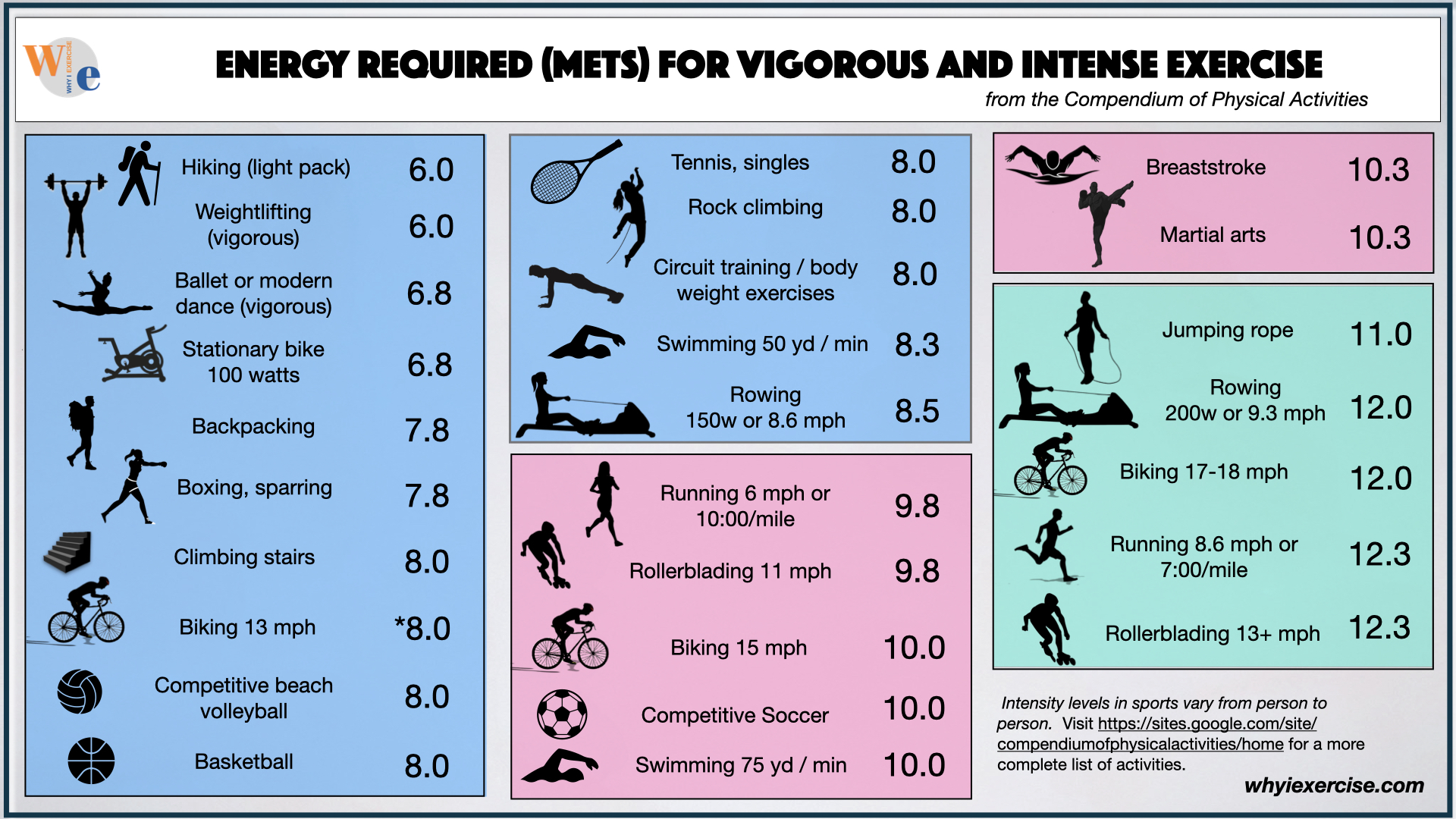
Exact MET scores for dynamic sports activities will vary from person to person, but these research-based scores are a reliable estimate. This information makes it easier to shift your daily routine to be active enough to give you health benefits.
Metabolic Equivalent & calories burned with exercise
Metabolic Equivalent can also show us the calories we burn during exercise. The higher the METs for your activity, the more calories you burn. Calculate your calories per minute with this equation: Calories per minute = (number of METs x 3.5 x body weight in kg) / 200.
Your exact calories burned during exercise may vary due to differences in muscle mass, but this equation is a reliable starting point.
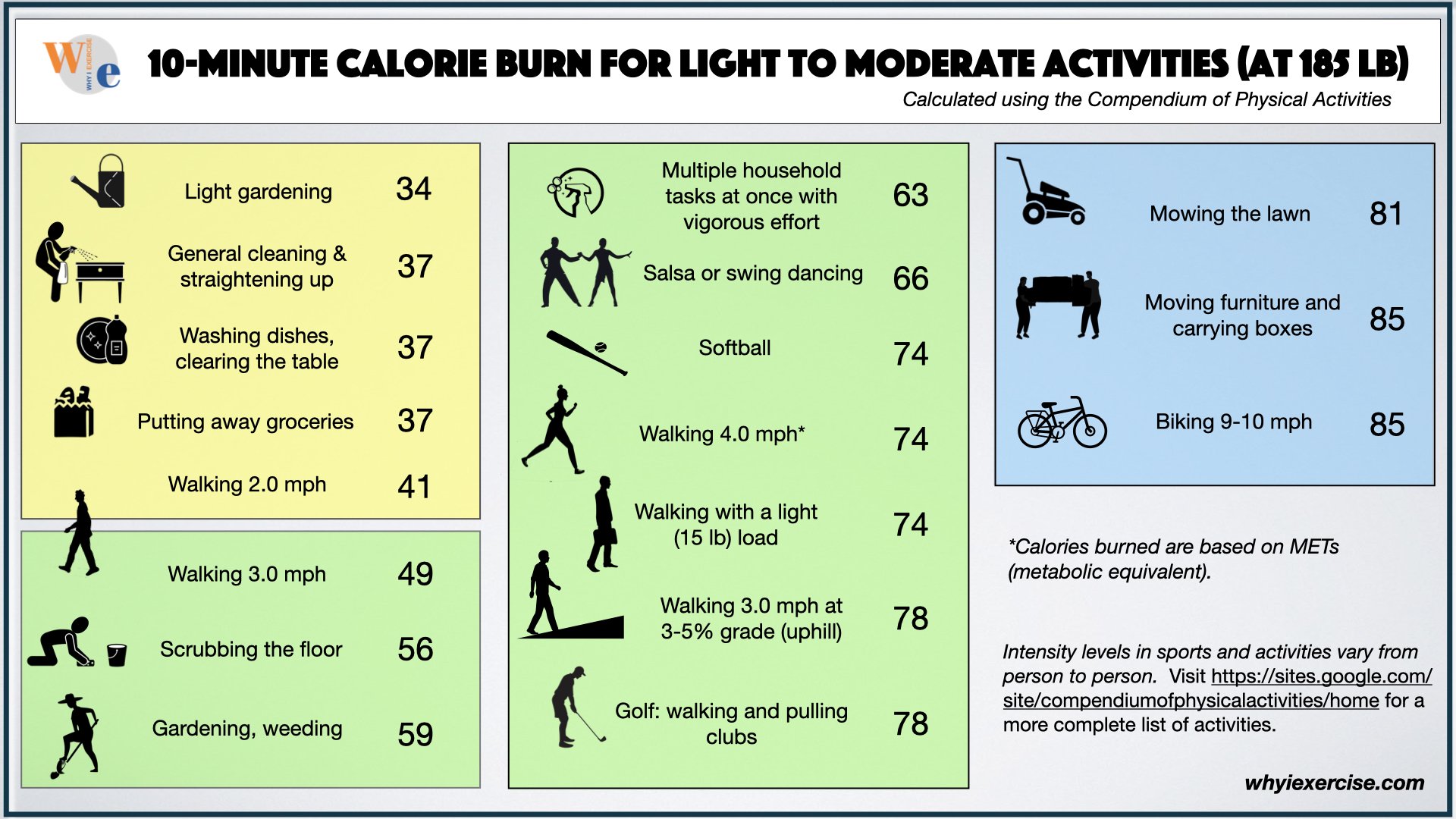 Notice the wide range of calorie burn for 10 minutes of these activities. At rest, a person weighing 185 lb burns 15 calories every 10 min.
Notice the wide range of calorie burn for 10 minutes of these activities. At rest, a person weighing 185 lb burns 15 calories every 10 min.For example, if you walked 4.0 mph (3.3 METS) and you weigh 84 kg (or 185 lb), your calories per minute would be (5 x 3.5 x 84) / 200, which equals 8.4 calories per minute, which is 84 calories for every 10 minutes of walking.
Metabolic Equivalent and life expectancy
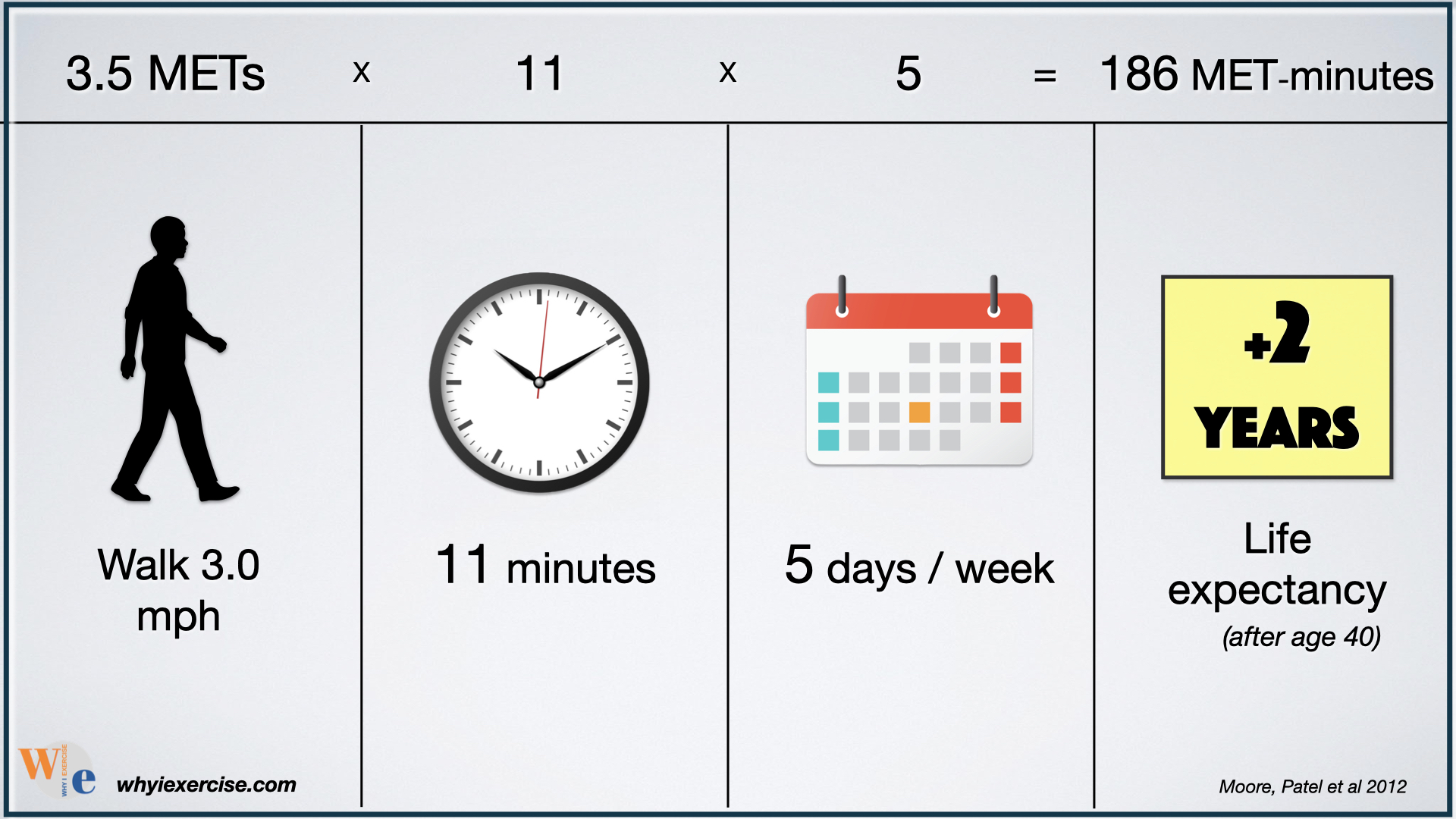 An 11-minute walk, five days per week can increase life expectancy by two years compared to people who don't exercise.
An 11-minute walk, five days per week can increase life expectancy by two years compared to people who don't exercise.Metabolic Equivalent has also been used to find meaningful exercise standards for health and longevity. According to Cambridge University research, people who exercise at an equal intensity to a brief 3.0 mph walk lived two years longer than sedentary people.
It takes 11 minutes, five days a week to meet the standard. With a brisk walk at 4.0 mph, you can do it in 7.5 minutes, or if you want to walk slowly (2.0 mph), it’s 13.5 minutes.
Studies like this use a measurement called MET-minutes, which is the number of METs for your activity times the number of minutes you perform it. For example, a brisk walk (4.0 mph) for 20 minutes is 5 METs x 20, which equals 100 MET-minutes.
A more intense exercise gives you the same number of MET-minutes in less time. Riding a bike at 13.0 mph is 8 METs. Biking 12.5 minutes at 13 mph also equals 100 METs.
Metabolic Equivalent and health risks
Based on health outcomes such as the likelihood of cardiovascular disease or premature death, the established recommendation for weekly exercise is 500 MET-minutes or more. A new review of studies from Cambridge estimates that we could avoid 10% of all premature deaths if everyone got 250 MET-minutes of exercise per week.
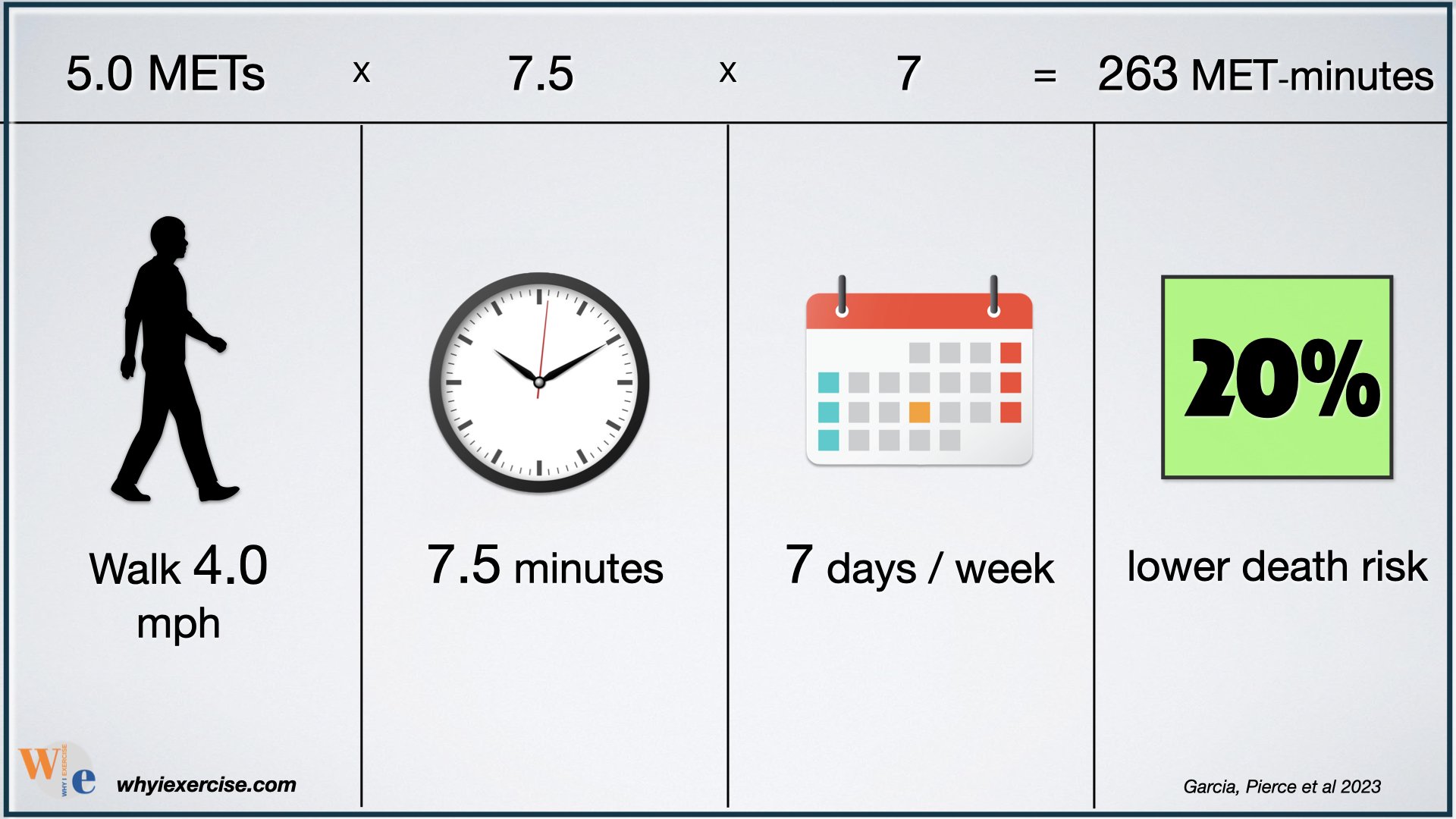 Compared to no exercise, one brief brisk walk every day can be enough to lower death risk by 20%.
Compared to no exercise, one brief brisk walk every day can be enough to lower death risk by 20%.This is like a daily walk of 11 minutes or a brisk walk of just over 7 minutes. Increase your exercise time and intensity enough to double the MET-minutes and reduce your risk of death by over 20%.
Use Metabolic Equivalent to create a Healthier lifestyle, even when you're busy.
Using the info from this masterclass article, you'll learn how to adjust your exercise training to keep yourself afloat in busy times and scale your workouts to match proven standards for health and longevity when you have more time available.
To see more examples of how you can protect your health with exercise when life gets overwhelming, watch this video by Why I Exercise on YouTube.
Metabolic Equivalent for your exercise goals
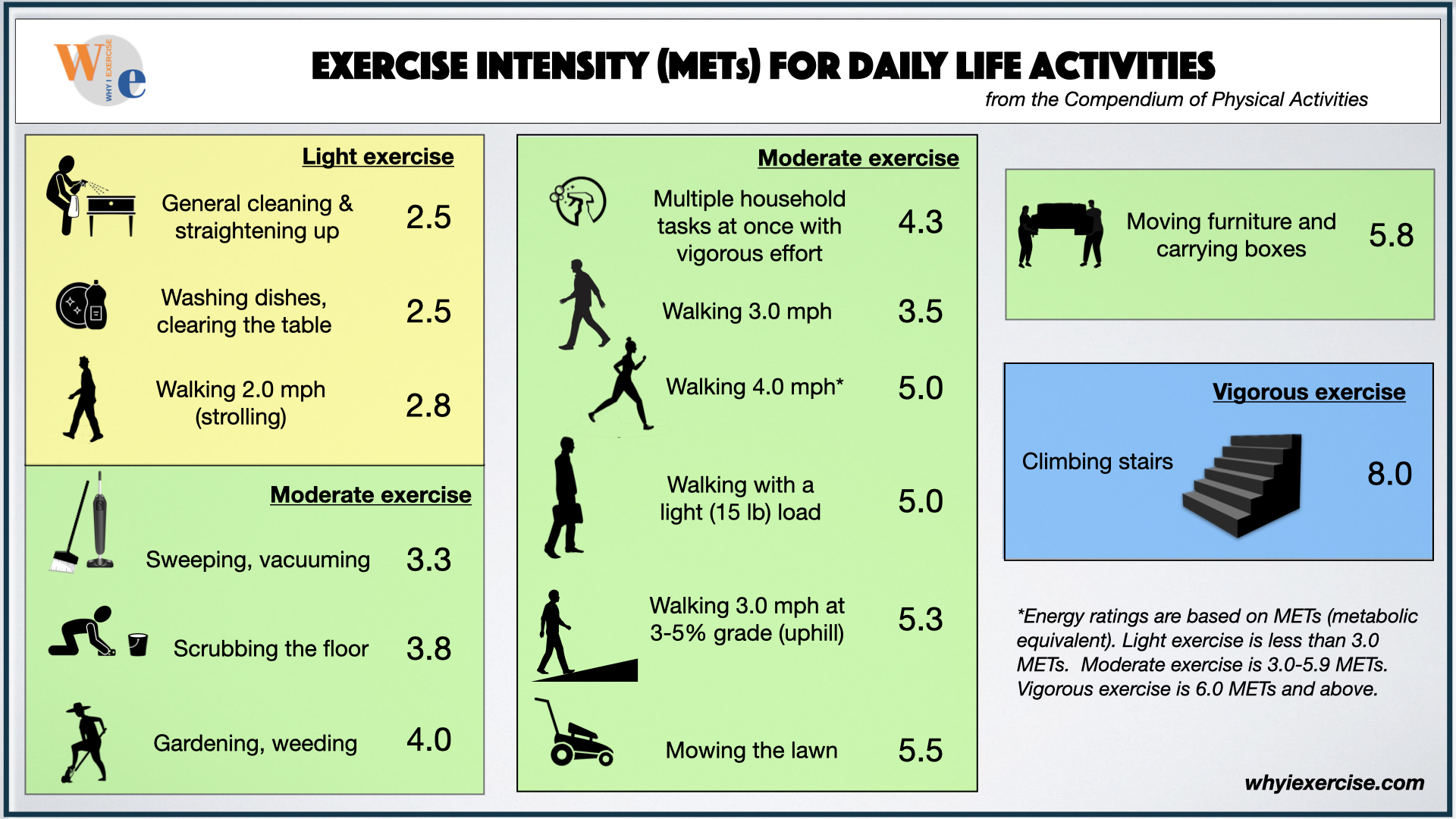 Daily life activities compared by MET intensity scores and organized by light, moderate, and vigorous exercise.
Daily life activities compared by MET intensity scores and organized by light, moderate, and vigorous exercise.Once you are familiar with how MET-minutes work, you can use a wide range of activities to meet your exercise goals. Daily life activities can be equally effective for exercise as walking.
General guidelines define moderate exercise as 3.0 to 5.9 METs.
Find activities similar to these that are available to you on your busiest days. It may help you reach a minimum level of exercise even on an overwhelming day.
With this in mind, suppose you wake up on a Saturday and notice you’ve fallen behind on your housekeeping or yard work. Chores can help break up long periods of sitting for any of us, but doing these tasks together at a decent pace bumps the METs from 2.8 to 4.3.
You can get moderate to vigorous exercise from mowing the lawn, moving heavier items, and reorganizing. Then if you have errands to run or you need to walk the dog after your chores, increase the speed and distance of your walking while you’re out.
When it’s possible, you can boost your health benefits by adding brief workouts to your active daily routine.
Can you squeeze in a few minutes of calisthenics exercises or walk-jog 2-3 times around the block before the end of the day? How about a 10-15 minute workout?
Pace yourself and choose wisely. The intensity varies widely between the activities!
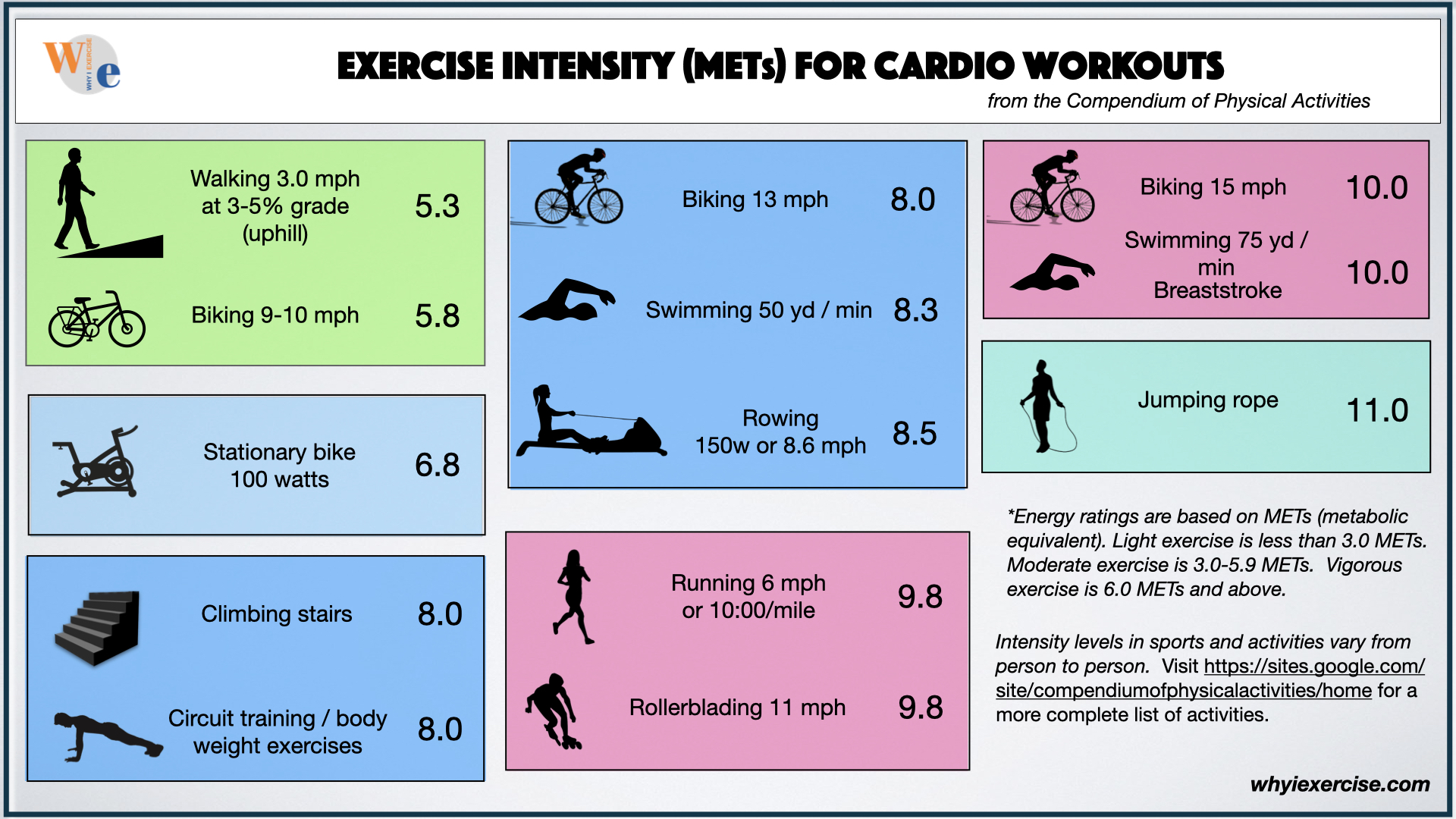 Comparing the MET scores of cardio exercises.
Comparing the MET scores of cardio exercises.For best results, warm up before starting, rotate exercises between workouts, and increase exercise time gradually as your schedule permits. At this level of training, you may be near 450 MET-minutes per week, which is the research exercise standard that adds three years to your life expectancy.
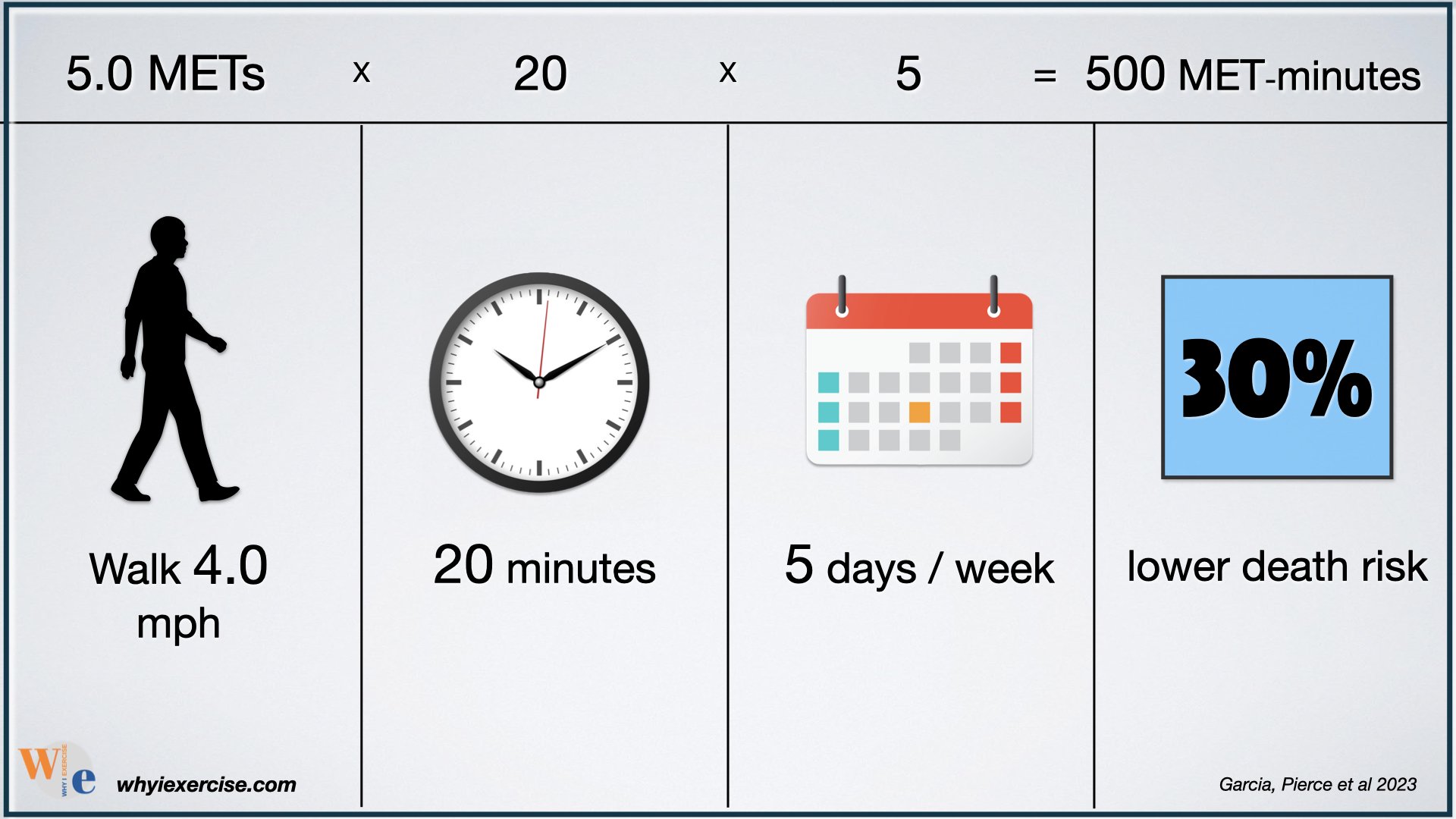 Compared to no exercise, a 20-minute brisk walk five days per week can lower death risk by 30%.
Compared to no exercise, a 20-minute brisk walk five days per week can lower death risk by 30%.At 500 MET-minutes Cambridge observed a 30% reduction in death from any cause, and at 600 MET-minutes they saw a 30% reduction in cardiovascular-related premature deaths. The study also estimated that about 16% of premature deaths from any cause would be avoided if everyone consistently exercised more than 525 MET-min per week.
Metabolic Equivalent for senior-friendly exercises and sports!
MET can also work well for seniors and anyone who needs to start more slowly. Pick activities that match your ability level.
Increase the intensity and time spent exercising gradually, when you feel ready. Exercise at your own pace and slow down or switch activities as needed.
Learn more about the #1 fitness test for seniors in this article.
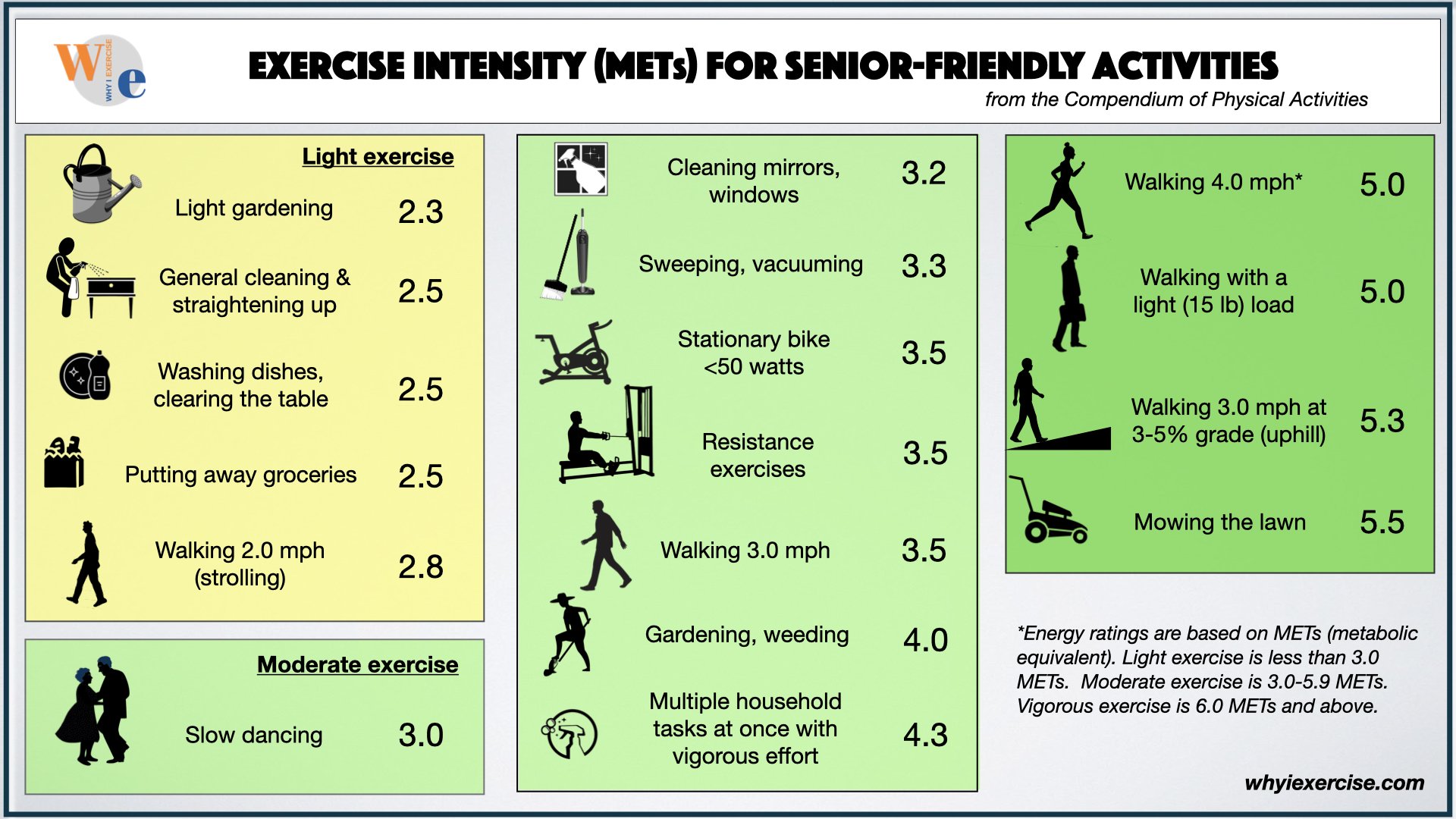 Comparing the MET scores of senior-friendly exercises.
Comparing the MET scores of senior-friendly exercises.General guidelines define moderate exercise as 3.0 to 5.9 METs, but your fitness level (VO2 max) will determine what is a light, moderate, or vigorous exercise in your case. A quick way to gauge your exercise intensity is to pay attention to your breathing during activity. Your exercise is light if you have enough breath to sing, moderate if you can talk, and vigorous if you can only say a few words at a time.
Judging your effort will help you pick training activities and exercises that give you greater benefits. Metabolic Equivalent intensity will always vary depending on your effort. For example, a leisurely bike ride (3.5 METs) may feel too easy. Picking up the pace to 10 mph (6 METs) gives you more calorie burn and could be a better intensity. Substitute hills or stairs in a flat walking route and get a comparable increase in METs.
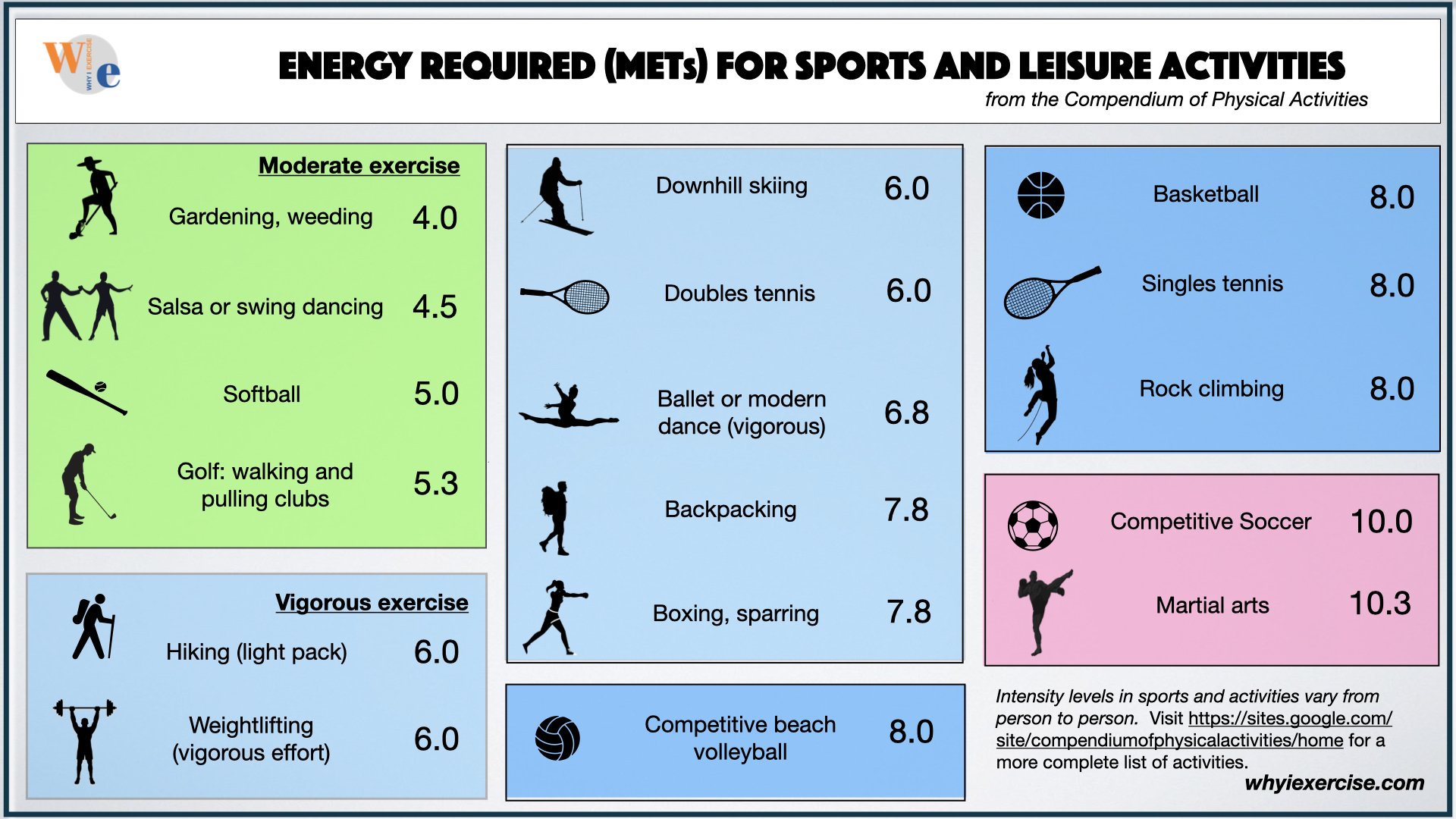
With more time available, you can use Metabolic Equivalent to choose from a wide range of possible sports and activities that match your ability. Pick exercises you’ll look forward to, and you’ll be much more likely to consistently match the training standards proven to improve quality of life and longevity.
Find many more activities at the Compendium of Physical Activities website.
Conclusion
Metabolic Equivalent is a scientific measurement that allows you to fine-tune your lifestyle for a longer life expectancy and increased calorie burn, using activities of all kinds that can fit into your weekly routine. With more time available, scale your workouts for increased health benefits.
As your fitness improves, you can tolerate higher-intensity activities and gain more health benefits from exercise. See the masterclass articles below to learn more about cardio fitness (VO2 max) and the potential effects of body weight and size on your long-term health.
More Masterclass Articles
VO2 Max, the #1 survival indicator?
VO2 max impacts our performance, our health, and even our survival! Find out whether you’re fit enough for optimal health and top performance. See the average VO2 Max for your age group and find out how much you need to improve your fitness to lower your health risk significantly.
Learning the health advantages of different sizes and weight groups can help you zero in on what you want for yourself. Take a step toward optimal health with weight goals you can commit to achieving.
References
1) Arizona State University, Healthy Lifestyles Research Center, Compendium of Physical Activities, https://sites.google.com/site/compendiumofphysicalactivities/home
2) Moore SC, Patel AV, et al. Leisure time physical activity of moderate to vigorous intensity and mortality: a large pooled cohort analysis. PLoS Med. 2012;9(11):e1001335. doi: 10.1371/journal.pmed.1001335. Epub 2012 Nov 6. PMID: 23139642; PMCID: PMC3491006.
3) Garcia L, Pearce M, et al. Non-occupational physical activity and risk of cardiovascular disease, cancer and mortality outcomes: a dose-response meta-analysis of large prospective studies. Br J Sports Med. 2023 Feb 28:bjsports-2022-105669. doi: 10.1136/bjsports-2022-105669. Epub ahead of print. PMID: 36854652.
4) Jetté M, Sidney K, Blümchen G. Metabolic equivalents (METS) in exercise testing, exercise prescription, and evaluation of functional capacity. Clin Cardiol. 1990 Aug;13(8):555-65. doi: 10.1002/clc.4960130809. PMID: 2204507.
Related articles
Calories burned during exercise
Compare the calories burned in 30 different exercises and physical activities. Calories are calculated for male vs. female and for 3 separate weight classes.
Free workout plans
Follow this 12 week plan, using your favorite physical activities, to guide yourself to the amount of weekly exercise your body needs for good health.
Rockport Walking Test
Walk 1 mile for time, and enter your heart rate into the fitness calculator. The better your fitness score, the lower your risk for future health issues.
VO2 Max
Find out how much you need to improve your cardiovascular endurance to lower your risk of future health conditions.
Return from metabolic equivalent to free home exercise programs.
Return to home page: Why I exercise.

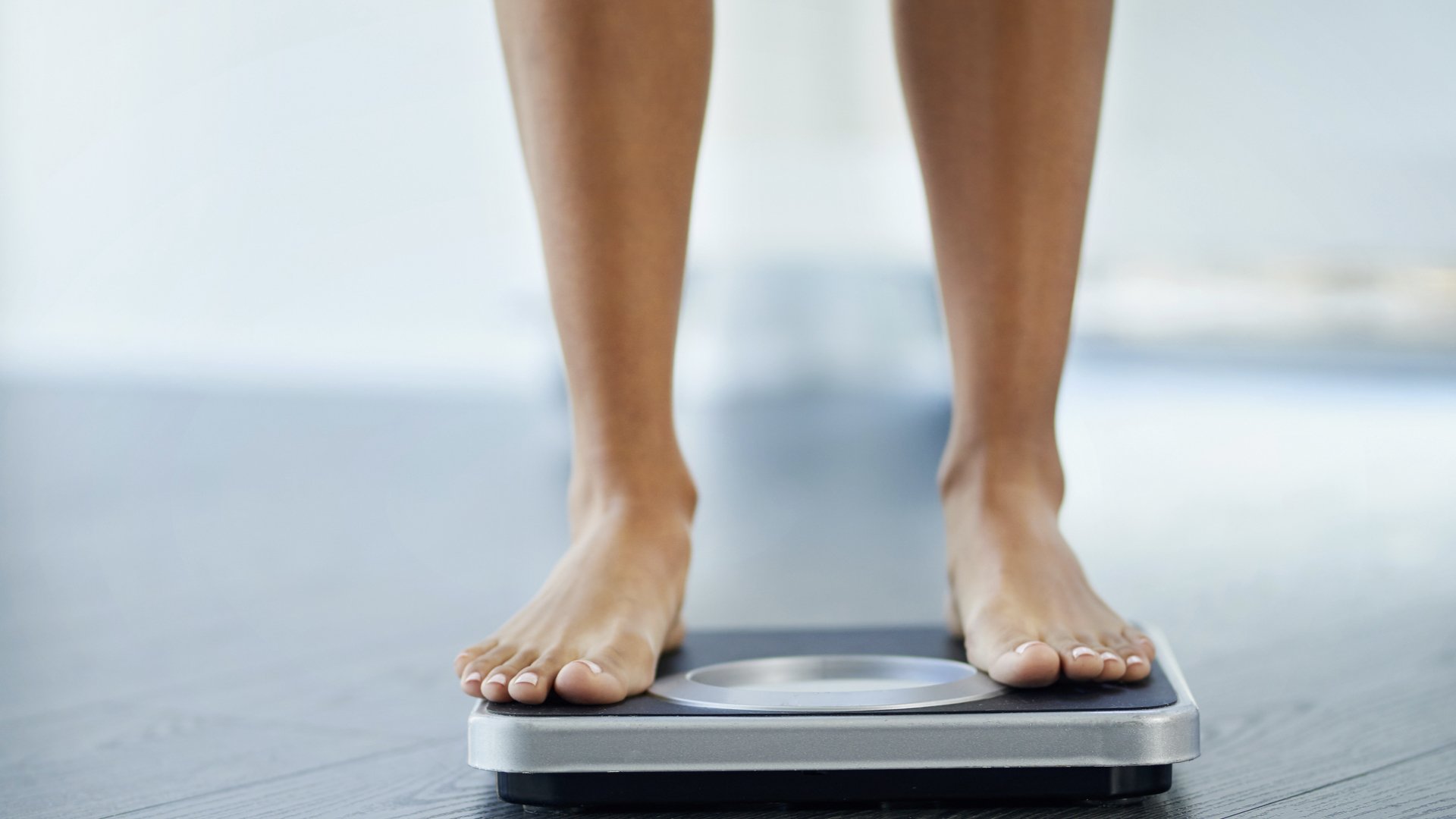
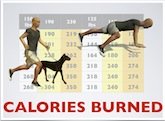
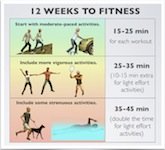
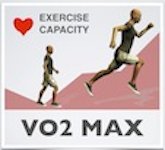
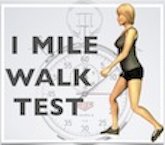
Leave me a comment in the box below.